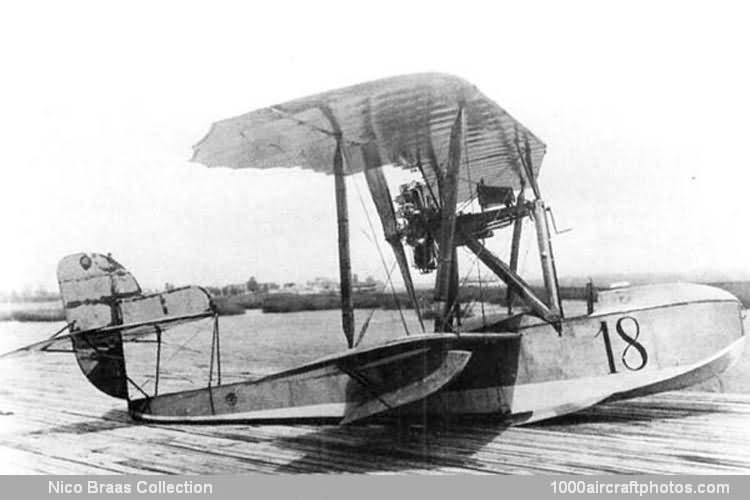04/30/2014. Remarks by Johan Visschedijk: "Dmitrii Pavlovich Grigorovich was the most important constructor in Russia to have stayed in post-revolutionary Soviet Union and become a famed Soviet designer. Born in 1883, he was a full-time student at Kiev polytechnic institute and graduated in 1910. His first job was as a journalist on an aviation magazine in St. Petersburg, but in January 1913 he was appointed works manager for newly opened aircraft plant of S.S. Shchetinin and M.A. Shcherbakov, second in Russia to build aircraft in series.
Initially the firm produced batches of Nieuport IV and Farman F.16 aircraft, but also very extensive repair and modification work on a crashed Donnet-Lévêcque flying boat which became the first Grigorovich aircraft, designated M-1. Thereafter Grigorovich designed a long series of aircraft of many classes.
Grigorovich was original head of OMOS (Otdel Morskogo Opytnogo Samoliotostroenija, Department for experimental naval aircraft construction) and later a renowned lecturer at MAI (Moskowsky Aviatsionnyj Institute, Moscow Aviation Institute), but suffered period in wilderness under arrest in Hanger 7 at GAZ-39 (Gosudarstvennyj AviaZavod, State Aircraft Factory) in 1930-1933. He died in 1938, reportedly as result of illness.
The M-12 was preceded by the M-11, which was a small flying boat fighter. The M-11, first flown in the summer of 1916, was built by Shchetinin and hence was also designated Shch-I (Shchetinin-Istrebitel, Shchetinin fighter). It was built as a two-seater, powered by an 100 hp Gnome Monosoupape rotary engine driving a pusher propeller, and armed with a pivoted bow gun (various types but usually rifle-caliber). An 110 hp Le Rhône powered single-seat version was also built, this had usually a fixed bow gun. It had considerable steel armor (thickness up to 6 mm) around the bow cockpit, the pilot cockpit and the front of engine.
In winter the M-11 could be operated from snow or ice with twin skis fitted under the forward fuselage and a single ski under the tail plane. At least 100 were ordered, but only some 60 were delivered, most as single-seaters, when it was discovered the aircraft also possessed poor handling when alighting on water.
The M-12 single-seat boat distinguished from the M-11 by a deeper nose and a redesigned tail. At least one was a fixed-gun fighter, but most had no gun or armor and were used for civil utility duties and single-seat training. Although climb-to-height was improved the forward speed was less than the M-11 and consequentially only a few M-12s were built."
